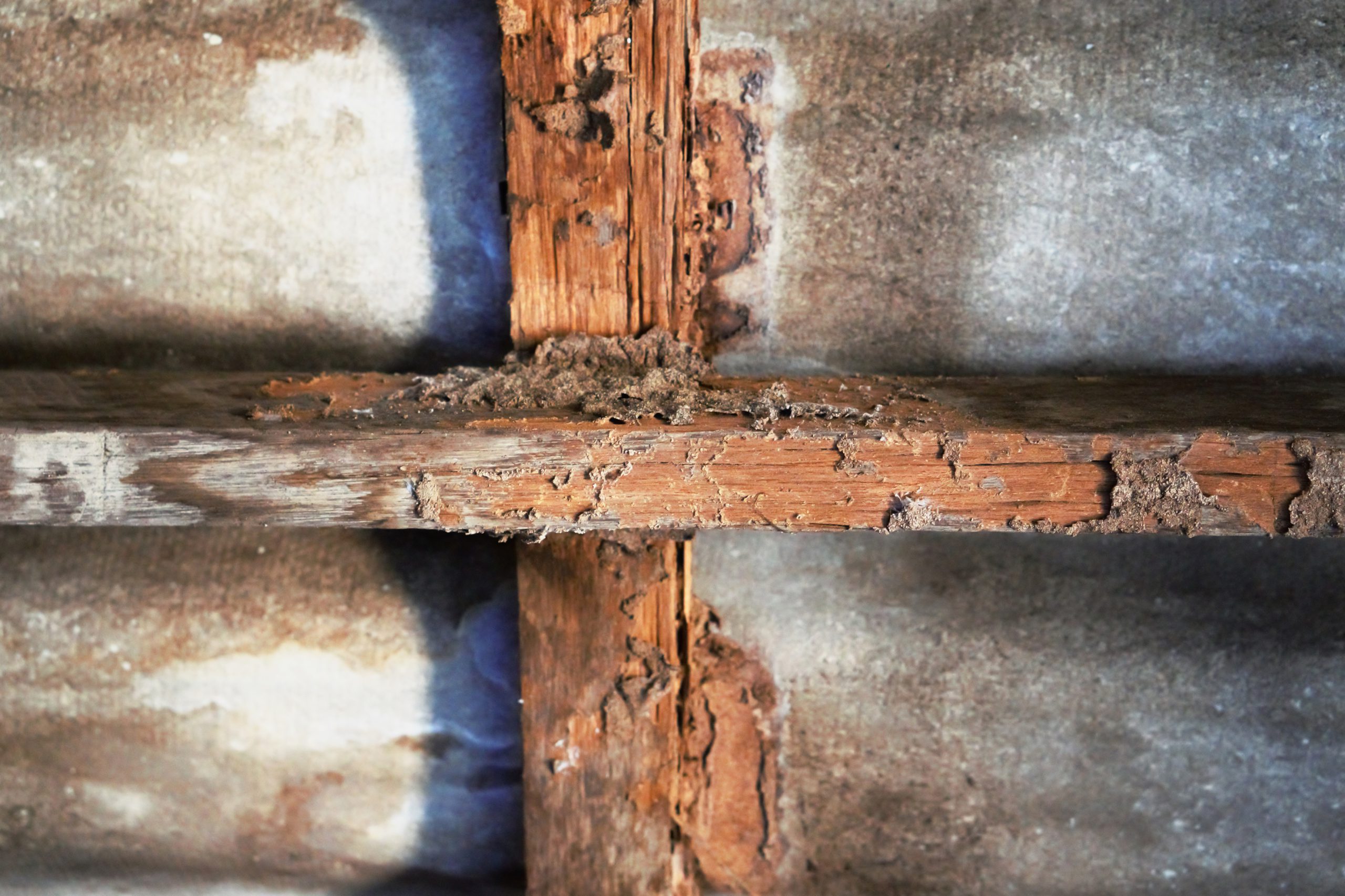
What Is Wet Rot?
Wet rot is actually the collective name to a number of wood destroying fungal species, the most common of which is Coniophora Puteana also known as cellar fungus. These wet rot fungi get their food by breaking down the walls of wood cells which causes a loss in strength over time.
Wet rot is one of the most common forms of timber decay and it thrives in environments that have a moisture content between 30% and 60%. Although wet rot is not as severe as dry rot it can still cause serious damage to structural timbers in your property.
How to identify wet rot
Wet rot is often difficult to identify as it usually occurs under floorboards, behind skirting boards, underneath leaking plumbing and in damp basements. Due to this difficulty wet rot is commonly not found until the damage has progressed into a much bigger problem.
There are, however, a number of signs that point to a wet rot infection in your property. Catching wet rot in its earliest stages is key, so following and looking out for the below could be wise.
- A damp musty smell
- Cracking or softening timber
- Weak or discoloured wood
- Moving floor when walking over it
- Any signs of fungal growth on any part of the timbers in your home
Wet rot is commonly found in ground floors and roofs with timbers built into the external walls as these are susceptible to damp problems. Every building has its unique traits, however, so you could find wet rot anywhere.
It is important to properly diagnose any rot that has infested wood in your home as you will need to determine whether it is dry rot or wet rot. A timber decay survey from experienced wet rot specialists like APP Protect is recommended.
Does wet rot spread?
Wet rot does not spread, unlike dry rot that is capable of penetrating brickwork to find new sources of wood to use as food. Wet rot growth will cease once the damp has been removed so treating the damp that causes the wet rot is essential to stem any further potential damage.
What causes wet rot
As its name suggests, wet rot is caused by increased moisture in the wood as wet rot spores are attracted to high moisture content timber. Excess moisture in wood provides wet rot with the ideal conditions to grow as it gives fungal spores the nutrients they need to germinate and grow.
An excess of moisture could happen for many reasons such as leaking guttering, leaking roof, failed plumbing, rising damp, or condensation through poor ventilation. These issues will allow the wood surrounding the problematic area to reach the level of dampness required for wet rot growth.
What are the differences between wet rot and dry rot
Both wet rot and dry rot are wood destroying fungi that can seriously compromise the structural integrity of a property if left untreated.
They both need a level of moisture to begin to germinate and use the wood as a food source. However, wet rot needs timbers to have 50% moisture content compared to 20% for dry rot.
Dry rot can spread aggressively over a property in search of new wood to use as nutrients. Its spores are taken through air currents in search of uninfected areas. Wet rot is a localised fungi that is constrained to the source of moisture meaning it can be treated relatively easily if caught in time.
Is wet rot dangerous?
If a building has a timber frame or load-bearing timber within its structure then untreated wet rot can cause serious damage and threaten the stability of the building. The potential for a collapse in building structure poses a very serious risk to your health and safety if the wet rot infected timbers are not properly treated and the underlying damp issue is not remedied.
The fungus that causes wet rot, however, does not present an immediate health risk. The damp that generally causes wet rot can negatively affect those with respiratory issues so we always recommend you identify and treat rot and damp as soon as possible.
Can you prevent wet rot?
The best way to prevent any kind of rot in your home is to prevent wood and timber becoming damp, as damp wood is always at risk of being eaten away by wet and dry rot. This, however, is easier said than done as moisture can make its way into the smallest and darkest of areas within your home. Under floorboards, in roof voids, behind plasterwork are places that can be affected by wet rot without you necessarily noticing.
Treating wet rot
The first step to treating wet rot is to correctly identify it and make sure it is not dry rot. If it is the latter then APP are perfectly placed to offer a dry rot treatment plan. It is possible that no treatment at all could be needed depending on the type of rot growth and if it’s active or not. However, in some cases we would need to act quickly to eradicate the problem which could be a course of chemical application or just an improvement in ventilation. It all depends on your particular circumstances.
If you notice any of the tell tale signs of wet rot then we always recommend requesting a timber decay survey from a local, experienced team of qualified technicians. APP Protect has been serving residents and commercial clients across Cambridgeshire since 1967 so we know how to diagnose and treat your rot and damp problems.
We’re Ready To Help You
Please get in touch with our friendly team today and we can get the ball rolling on your project sooner than you think.
